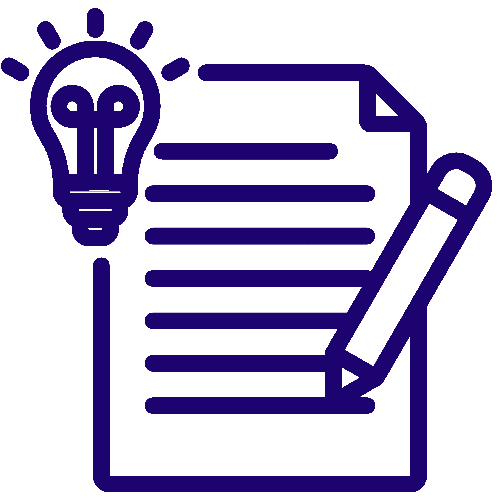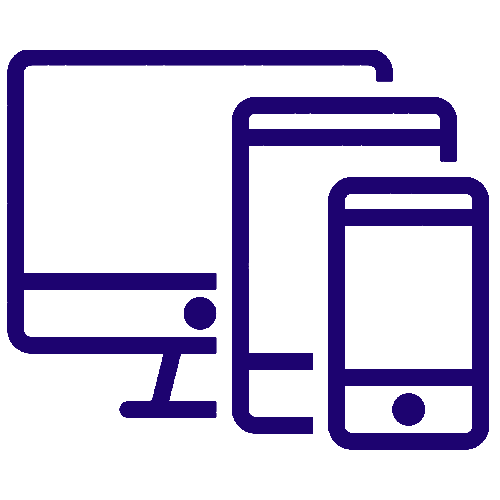Pivotal Accessibility's Innovative Accessibility Solutions for the Travel and Tourism Industry
This case study is about web accessibility in the travel domain, focusing on Pivotal Accessibility's remarkable mission to break down digital barriers within the tourism industry. It explores how Pivotal Accessibility helped a leading travel firm in Canada overcome its accessibility issues and provide an inclusive experience to all of its users. Their vision was to ensure that every traveler could seamlessly navigate the web platforms of airlines, hotels, etc. making the digital realm of travel as inclusive as the physical one.
The case study also documents how travel firms that proactively embrace web accessibility can tap into a vast market of potential customers and enhance their reputation as socially responsible businesses.

The State of Web Accessibility in Travel
Before we delve into the impact of Pivotal Accessibility's work, it is crucial to understand the existing state of web accessibility in the travel domain. In a time when planning a trip begins with a few taps on a smartphone or clicks on a website, digital accessibility in the travel domain has become very important. It's the gateway to inspiration, research, and seamless bookings, making every aspect of the traveler's journey a digital affair.
However, this digital transformation isn’t equally accessible to everyone. For people with disabilities or unique needs, the digital travel landscape is often characterized by insurmountable hurdles and barriers, preventing them from exploring the world. The impact of web inaccessibility on this demographic went beyond mere inconvenience; it equated to a denial of equal access and participation in the global travel community.
Web Content Accessibility Guidelines (WCAG): The Compass for Digital Inclusion
Web Content Accessibility Guidelines (WCAG): The Compass for Digital Inclusion
To appreciate the scope of the challenges, one must also understand the guiding framework for web accessibility - the Web Content Accessibility Guidelines (WCAG). Developed by the World Wide Web Consortium (W3C), the WCAG is the gold standard when it comes to ensuring that digital content is accessible to all, including individuals with disabilities.
The WCAG provides a set of technical standards and principles designed to make web content more perceivable, operable, understandable, and robust. It comprises four overarching principles:

POUR


Perceivable
Information and user interface components must be presented to users in ways they can perceive. This includes text alternatives for non-text content, adaptable content, and distinguishable content.

Operable
User interface components and navigation must be operable. This encompasses keyboard accessibility, providing users with enough time to read and use the content, and avoiding content that could cause seizures or physical discomfort.

Understandable
Information and the operation of the user interface must be understandable. This involves readability and predictability of the web pages, user input assistance, and clear and consistent navigation.

Robust
Content must be robust enough that a wide variety of user agents, including assistive technologies can reliably interpret it.
The Accessibility Challenges Faced by the Travel Firm
Now that we have a preliminary understanding of the accessibility guidelines, let’s try to understand the issues faced by the travel provider that was making their website inaccessible to users with disabilities:
 1
1
Data-Rich Environments
Their website included a wealth of data, from flight schedules and hotel bookings to complex itineraries. While providing this information is essential for travelers, it also poses challenges for individuals with cognitive disabilities. Presenting data in a clear, organized, and consistent manner is a significant challenge that they need to overcome.
 2
2
Transactional Interfaces
Booking flights, hotels, and activities involve complex transactional interfaces. These interfaces must be operable through keyboard navigation for users who cannot rely on a mouse or touchscreen. Error prevention and correction mechanisms must also be designed to accommodate users who might make data input errors due to various disabilities.
 3
3
Mobile Responsiveness
As travelers increasingly turn to mobile devices for their booking and research, the travel firm faced the challenge of ensuring that their website and apps were not only accessible but also responsive to a wide range of devices and screen sizes. A key element of web accessibility is providing a seamless experience on mobile platforms, and this necessitates both technical expertise and rigorous testing.
 4
4
Third-Party Integration
Their website was integrated with third-party services such as payment gateways, reservation systems, and mapping services. Ensuring that these external services also adhere to accessibility standards can be a complex task. It requires coordination, technical know-how, and sometimes negotiation with third-party providers to ensure a fully accessible user experience.
 5
5
Multimedia Content
The travel and tourism industry thrives on visual content. Their website was no exception. Beautiful images, videos, and interactive maps help travelers make informed decisions. However, ensuring that this multimedia content is accessible to users with visual or hearing impairments can be technically complex. Providing audio descriptions for videos and text alternatives for images, while maintaining the visual appeal, demands careful planning and execution.
 6
6
Regulatory Compliance
The regulatory landscape surrounding web accessibility is ever-evolving. The firm also needed to comply as non-compliance could result in legal repercussions, financial liabilities, and reputational damage.
Pivotal Accessibility: Transforming Accessibility Challenges into Solutions
When the travel firm found itself grappling with the intricate challenges of making its digital assets accessible to users with disabilities, it turned to the experts in the field: Pivotal Accessibility. The ensuing partnership would not only tackle these challenges but also serve as a transformative journey toward a more inclusive and accessible digital environment. These steps were taken by Pivotal Accessibility’s IAAP and DHS-certified testers to help make their digital assets fully accessible:
Conducting a Comprehensive Accessibility Audit
Pivotal Accessibility embarked on the project by conducting a comprehensive accessibility audit of the travel firm's digital assets. This audit involved a detailed examination of the website, mobile applications, and third-party integrations. The goal was to identify areas of non-compliance with the Web Content Accessibility Guidelines (WCAG) and pinpoint potential barriers to accessibility.
The audit process was multi-faceted, addressing various critical aspects:
1. User Interface Evaluation
Pivotal Accessibility's team of experts conducted a thorough examination of the user interfaces of the travel firm's digital platforms. This evaluation involved assessing the operability, navigation, and user-friendliness of these interfaces.
2. Content Analysis
The team analyzed the content presented on the website and applications. This included scrutinizing multimedia content such as images and videos, as well as the way information was presented. The focus was on making all content perceivable and understandable.
3. Code-Level Inspection
Pivotal Accessibility delved into the technical underpinnings of the digital assets. They inspected the website's source code, ensuring that it adhered to coding standards that enhance accessibility. This involved addressing issues such as alternative text for images, semantic HTML, keyboard navigation, and compatibility with assistive technologies.
Creating a Tailored Accessibility Roadmap
Based on the insights gleaned from the accessibility audit, Pivotal Accessibility collaborated with the travel firm to create a customized accessibility roadmap. This roadmap served as a clear and structured plan for addressing the identified issues and ensuring ongoing compliance with accessibility standards.
The roadmap encompassed a spectrum of solutions:
1. Accessible Design Principles
Pivotal Accessibility worked with the travel firm's design team to integrate accessible design principles into the development process. This included creating a design system that adhered to WCAG guidelines, selecting accessible color schemes, and designing user interfaces that offered a seamless experience for users of all abilities.
2. Multimedia Accessibility
Ensuring that multimedia content was accessible to users with visual or hearing impairments was a paramount concern. Pivotal Accessibility implemented measures such as providing audio descriptions for videos, transcriptions for audio content, and alternative text for images. This made the travel firm's website and applications more inclusive for everyone.
3. Transaction Optimization
The transactional interfaces for booking flights, hotels, and activities were overhauled to enhance keyboard accessibility. Error prevention and correction mechanisms were fine-tuned to assist users who may encounter difficulties during the booking process.
4. Responsive Design
Recognizing the prevalence of mobile device usage in the travel sector, Pivotal Accessibility ensured that the website and applications were not only accessible but also responsive. Travelers using a diverse range of mobile devices and screen sizes could now enjoy a seamless and inclusive digital experience.
5. Testing and Validation
Pivotal Accessibility employed rigorous testing methodologies to validate the effectiveness of the accessibility enhancements. This involved the engagement of individuals with disabilities to use the website and applications and provide valuable feedback. It also included testing with a variety of assistive technologies to ensure compatibility.
Ongoing Support and Compliance
Pivotal Accessibility didn't consider the project complete with the implementation of accessibility solutions. They recognized that maintaining accessibility is an ongoing commitment. Therefore, they provided the travel firm with continued support to address evolving web accessibility requirements, updates, and enhancements.
The journey with Pivotal Accessibility was not just about meeting legal obligations. It was about fostering a commitment to inclusion and making travel a reality for all. The travel firm's digital assets underwent a profound transformation, becoming beacons of accessibility in the competitive travel industry.
This transformative partnership exemplified the positive impact that can be achieved when expertise, technology, and a commitment to inclusivity converge. Through their collaboration with Pivotal Accessibility, the travel firm became a trailblazer in providing accessible travel experiences for individuals of all abilities.
The Benefits of Accessibility
Expanded Customer Base
Increased Reputation
Legal Compliance
Improved User Experience
Increased Revenue

Conclusion: A Path Towards Inclusive Travel
The partnership between the leading travel firm and Pivotal Accessibility exemplifies the transformative power of web accessibility in the travel and tourism sector. Beyond addressing the legal obligations, this collaboration ignited a commitment to making travel accessible to everyone, regardless of their abilities.
Accessibility isn't merely a checkbox; it's a journey towards a more inclusive world. The travel firm's dedication to this journey demonstrates that accessible travel isn't just a legal obligation; it's a moral imperative and a path toward a more inclusive society.
As the travel and tourism industry continues to evolve, Pivotal Accessibility remains at the forefront, providing innovative solutions that empower organizations to transform accessibility challenges into opportunities. This case study serves as a testament to the positive impact of accessibility in the travel domain and the profound transformation it can bring to organizations and, most importantly, to travelers who rely on accessible digital platforms to explore the world.
